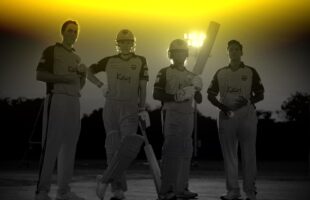In an already-crowded market competing for childrens’ eyeballs, Turner Broadcasting System Asia Pacific, Inc. is making ambitious plans to launch two new channels over the next few months.
Toonami, a programming block in the U.S. and soon a full channel here, is “a channel dedicated to bringing highoctane action and anime entertainment to fanboys (and girls) across the region.” Cartoonito, which has enjoyed considerable success as a European brand, “will feature colourful and engaging content in vivid HD aimed at stimulating the imagination of kids aged between 3 and 7 years.” Both channels are slated to launch in early 2013 across Southeast Asia.
“Toonami is the home of the superhero!”
Says Sunny Saha, SVP and MD for Turner Broadcasting System Asia Pacific, Inc.
Between the two channels, Toonami is likely to receive more buzz, given its more prominent (read: recognisable) programming slate, of which the DC comic superheroes (home to Superman, Batman, Green Lantern, Wonder Woman, and The Flash etc.) will take centrestage – a result of strategic alliances within Time Warner-owned companies.
“Turner does have a content deal with Warner Bros who produces content based on the DC library, including titles like Young Justice and Green Lantern,” explains Vishnu Athreya, Executive Director, Programming, Acquisitions & Development. “For any of Turner’s kids and entertainment brands, it’s vital for us to secure partnerships with quality studios that produce pedigree content, whether they are output deals or a la carte acquisitions. In the case of Toonami, we are really pleased to have access to what is probably the biggest catalogue of action hero animation anywhere.”
With strong superhero fare, a combination of Cartoon Network originals (Ben 10), plus external acquisitions, Toonami makes for a powerful proposition. Premieres in the inaugural launch will include Young Justice, Batman: The Brave and the Bold and anime series Dragon Ball Z (an acquisition from Toei Animation).
The similarities to Disney XD in Asia, which launched in September 2012 in Malaysia exclusively, are uncanny. XD is a boys-skewed channel also touted as the home to superheroes. Disney, given its partnership with Marvel Entertainment (Disney acquired the Marvel catalogue in 2009) has the same ability to sustain a superhero block as does Turner.
Saha’s response to the competition is one that suggests a preparedness backed by research. “When we’re putting together this proposition, we actually selected two markets (focus groups in Indonesia and the Philippines) and tested them out, and these are shows that rate very well, so rather than making it a comparison to our competitors, I think there is a lot in the brand for it to actually have a space of its own so I’m very confident about what this brand can actually do,” says Saha.
“Boys were jumping out of their skin when they heard of a dedicated brand offering for action,” claims Saha, which he says was a strong justification for the boy-skewed channel. “You know, there are fan girls as well as fan boys. Gwen (from Ben 10) is a superhero, but I got to be honest – Toonami is primarily aimed at boys, and it is for that action-loving group…girls can watch Cartoon Network!” jokes Saha.
While the girls would be watching the flagship Cartoon Network, there is also the nagging feeling that CN fans (boys particularly, if Turner plays its Toonami card right) might “jump ship” and hence cannibalise the mothership. “I actually think it’s complementary,” assures Saha. “If you look at the age spectrum, Cartoon Network’s core group is actually a ten-year-old; not a boy or a girl, but a ten-year-old. Cartoon Network’s proposition is comedy, and adventure. I think Toonami is slightly older. In fact, internally we’ve put schedules together and we feel it will (collectively) address a new audience spectrum; it will be additive to the Turner portfolio overall.”
“Big Fun for the Little One!”
Says Saha, when describing Cartoonito. Though not an official tagline for the preschool channel, it might as well be. Not just preschoolers, but parents will be a component Saha says the channel cannot do without.
“There is a lot of secondary viewership on Cartoonito in the form of parents, notably mothers,” explains Saha. “Therefore, in the research we did, we involved the parents, also because technically it’s difficult to measure the preschoolers’ experience so you need the mothers, or caregivers. We got a lot of experience done with Cartoonito in Europe which we can leverage on. Yes, our markets are different but when it comes to parenting there are quite a few similarities. So we’re going to use all that learning when we’re acquiring and scheduling as we build up our research in this market.”
With the age group (3 – 7 years) in mind, plus parents’ concerns, Saha is well aware that while flagship Cartoon Network places much emphasis on fun, Cartoonito’s programming needs to strike a balance between entertainment and education. Saha says that Cartoonito’s programming line-up will promote positive themes such as “friendship, teamwork and creativity to aid learning and development.”
“Our brand is still about fun but yes, for preschoolers there has to be an educational element but this is not a school. It does not tell you to do your homework, but it teaches you something, which is why LazyTown is such a huge title for us,” explains Saha.
LazyTown, the Turner-owned live-action series that promotes healthy, active lifestyles, was created by (and starring) Icelander Magnus Scheving. The Icelandic production has been seen by more than 500 million children and aired in 128 countries throughout the world. Michelle Obama is a huge fan, having recently appeared alongside Magnus’ alter-ego, Sportacus, in a series of public service announcements in the U.S, spurring children on to a lifestyle of physical activity.
Turner’s Athreya shares about the buying strategy for Cartoonito. “There are no specific output deals for Cartoonito – but there are content acquisition deals with various studios including Classic Media, Cookie Jar and Hasbro Studios.”
So while there is less content within the Time Warner family to tap on for preschool programming, Athreya’s team has brought in highly iconic content in the form of My Little Pony and Noddy in Toyland, on top of LazyTown, which has been acquired by Turner EMEA in 2011.
As with practically every regional pay channel, and more so for a children’s channel, Saha’s team is introducing more multiscreen possibilities to enhance the viewing experience and capture childrens’ attention beyond the first screen. Saha is tremendously proud of the Ben 10 app the broadcaster has developed. In August 2012, the company announced that the free app, the Ben 10 Ultimate Alien: Xenodrome, has shot straight to the top of the iTunes Store, achieving almost half a million downloads in its first month. In June, Turner’s Toonix, a multi-platform social game of avatars created with South Korean game developer, BlueArk Global, has achieved 50 million Toonix avatars with one created every minute in Asia-Pacific.
“Kids are primary consumers when it comes to expendables like toys, but they’re also secondary consumers. Today, a restaurant is equally appealing to a child consumer as it is to the parents but most importantly, they’re future consumers. We got to build brand equity now. That’s the zone we’re trying to get into – whether it’s better quality (HD) viewing experience; not just good stories; but HOW those stories are being told,” says Saha.







